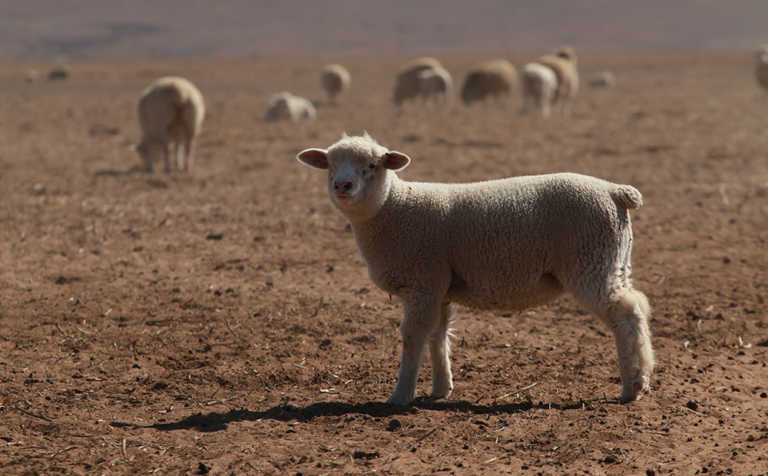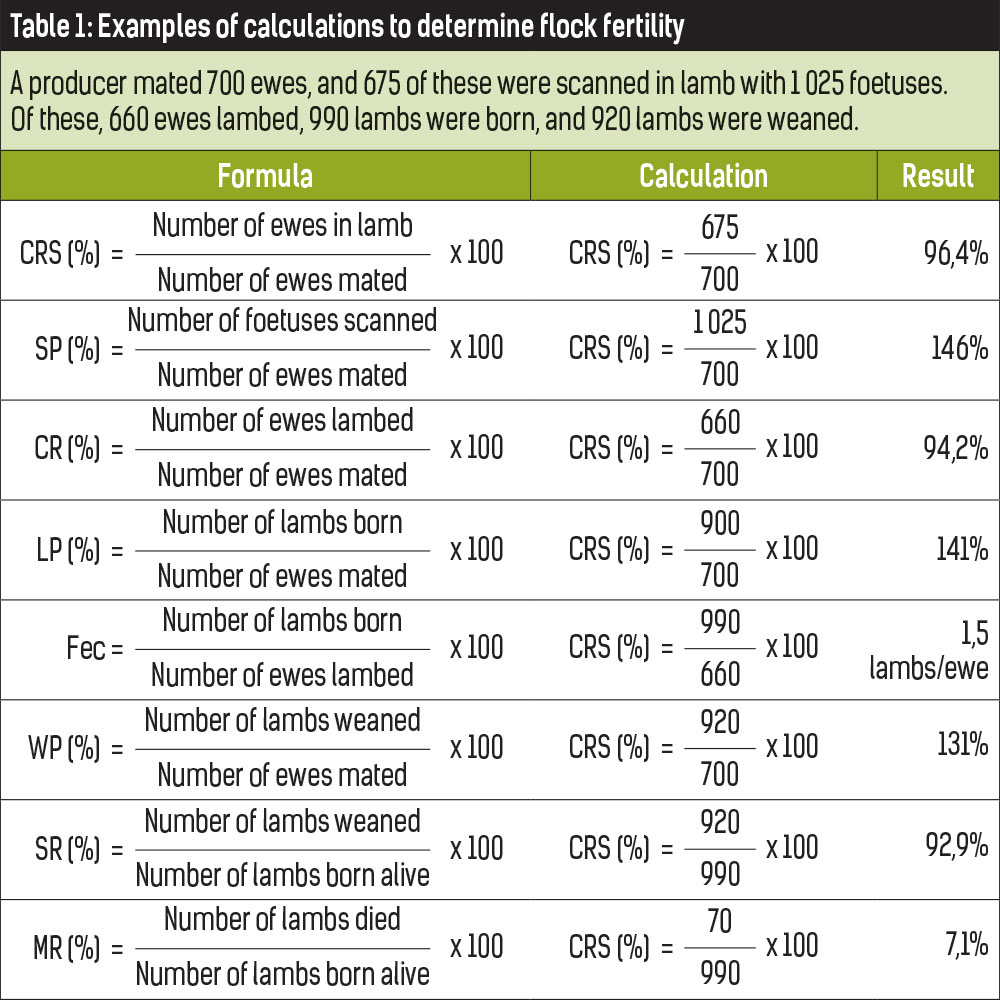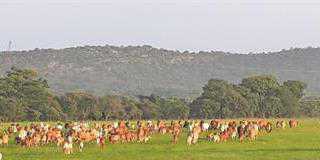
Photo: Gerhard Uys
Reproduction is key to survival in all livestock farming enterprises. It’s therefore important to measure the reproduction of ewe flocks during each breeding season.
This will help you identify ewe and sire fertility problems early.
Conception rate and scanning percentage
Both the conception rate at scanning (CRS), or number of ewes that were scanned in lamb, and the scanning percentage (SP), which is the number of scanned foetuses, are expressed relative to the number of ewes mated.
They can only be calculated if producers scan their ewes for gestation about six weeks after the end of the mating season.
CRS (%) = Number of ewes in lamb/number of ewes mated x 100.CRS cannot be above 100%; SP can range from below to above 100%, depending on the number of foetuses. These are the first measurements that will indicate the success or failure of a breeding season:
SP (%) = Number of foetuses scanned/number of ewes mated x 100.
Conception rate (CR) at lambing is the proportion of ewes that lambed compared with the number of ewes mated. CR cannot be more than 100%; the ideal is a CR of above 90%.
The lower the CR, the higher the number of ewes that did not lamb for some or other reason.
CR is an indicator of a flock’s reproduction potential and must be calculated for each breeding season.
CR for ewe groups mated to specific sires during a breeding season can also be calculated to determine if a low CR was the result of fertility problems of the sires or the ewes.
CR (%) = Number of ewes lambed/number of ewes mated x 100.
Lambing percentage
Lambing percentage (LP) is the proportion of lambs born or tagged compared with the number of ewes mated. It can range from below to above 100%, depending on the number of lambs born.
LP (%) = Number of lambs born/number of ewes mated x 100.
Fecundity
Fecundity (Fec) is used to determine the proportion of lambs born or tagged relative to the number of ewes that lambed, and will be above 1.
A high Fec means a high proportion of ewes produced more than one lamb during the mating season.
Fec = Number of lambs born/number of ewes lambed.
Weaning percentage
Weaning percentage (WP) is the proportion of lambs weaned compared with the number of ewes mated.
WP can range from below to above 100%, depending on the number of lambs weaned.
It helps to identify problems during the breeding season with regard to the ability of ewes to successfully rear good-quality lambs, as well as the management of the ewe and lamb flock prior to weaning.
WP (%) = Number of lambs weaned/number of lambs mated x 100.
Survival rate
Survival rate (SR) is the number of lambs that survived until weaning compared with the number of lambs born alive.
SR cannot be above 100%, and producers should aim to ensure as large as possible a portion of the lambs survive until weaning.
SR (%) = Number of lambs died/number of lambs born alive x 100.
Mortality rate
Mortality rate (MR) is the number of lambs that died before weaning compared with the number of lambs born alive.
MR can range from 0 to 100%, and producers should seek to keep MR as low as possible. A flock with a high MR indicates that a large number of the lambs born alive died before weaning.
MR can also be calculated for specific periods between birth and weaning.
MR (%) = Number of lambs died/number of lambs born alive x 100.
Source: Olivier, WJ. 2014. ‘Calculation of reproduction parameters’. Info pack ref: AP 2014/032, Grootfontein Agricultural Development Institute














